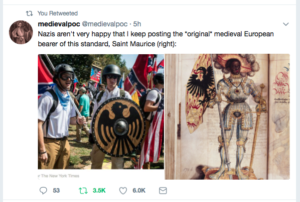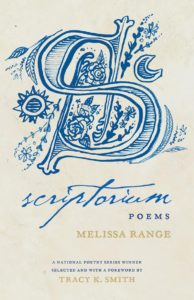Much recent discussion on #MedievalTwitter and in academia at large has focused on formal citation practice and more general acknowledgement of the ideas of others, especially less privileged groups. I’ve participated in numerous conversations at conferences that reinforce the fact that those in positions of academic power (senior scholars, usually white men, at elite institutions) tend not to cite the less privileged, even when their points are largely indebted to the work of graduate students, junior scholars, colleagues of color, or faculty at less prestigious institutions. Geography is in play here as well: I’ve heard US scholars accuse UK colleagues of citational neglect and vice versa.
Part of the recent discussion has focused on the Dating Beowulf collection (Manchester, 2019), about which I blogged last month, and the lack of citation in two of its essays to Adam Miyashiro’s 2017 blog post about decolonizing early English medieval studies; Adam also gave a paper on “Beowulf and Its Others: Sovereignty, Race, and Medieval Settler-Colonialism” at Kalamazoo in May of 2018 (full disclosure: I co-organized and chaired that session) and he plans to publish a version of that essay in postmedieval in the near future. Miyashiro’s work specifically analyzes Grendel “as an Indigenous person with a specific set of biopolitics” (phrase from his twitter thread of 30 Jan 2020, @adam_miya).
Probably the earliest iteration of an argument connecting Grendel to a form of indigeneity appeared in 1967 in the Journal of American Folklore. In “The Monsters of Beowulf: Creations of Literary Scholars,” Signe Marie Carlson argued for a “basis in fact” for the beings usually termed “monsters” in literary scholarship on the poem. Carlson’s work is very much a product of its time: she assumes an idealized, pagan ur-text for the poem with an added, later Christian veneer (that needs to be stripped away); she also equates “indigenous” with “primitive” in an iteration of the racist “noble savage” trope. More usefully, Carlson also provides solid lexical analysis of the ways that scholars and translators have used certain OE words, including gaest and feond, to confirm the “monstrousness” of those characters. Finally, she suggests that Grendel and his mother are akin to “indigenous inhabitants” encountered by Germanic invaders in early medieval history, rather than supernatural or fictional beings invented by the poet.
Carlson earned her PhD in comparative literature from USC in 1966; her 1967 Beowulf article is a version of the last chapter of her dissertation. She edited a vanity press publication of a purported legend of the Sami people in 1985 (she is not listed as the author). She seems never to have worked in academia or education, although there is a small scholarship fund in her name at Rogue Community College in southern Oregon; her obituary does not mention her PhD or any academic work, focusing instead of her political activism.
Carlson is thus something of an early edition of those enduring today’s academic precariat. Early English medievalists need to acknowledge that with no academic position and no institutional support, more than fifty years ago Carlson introduced an important idea –indigeneity– into scholarly discourse about a canonical poem.
Thanks to Misty Schieberle, Kriszta Kotsis, and the MedFem e-list for crowdsourcing most of the information about Carlson’s life outside early medieval studies.
Carlson, Signe M. “The Monster of Beowulf: Creations of Literary Scholars.” Journal of American Folklore 80.318 (1967): 357-364.


